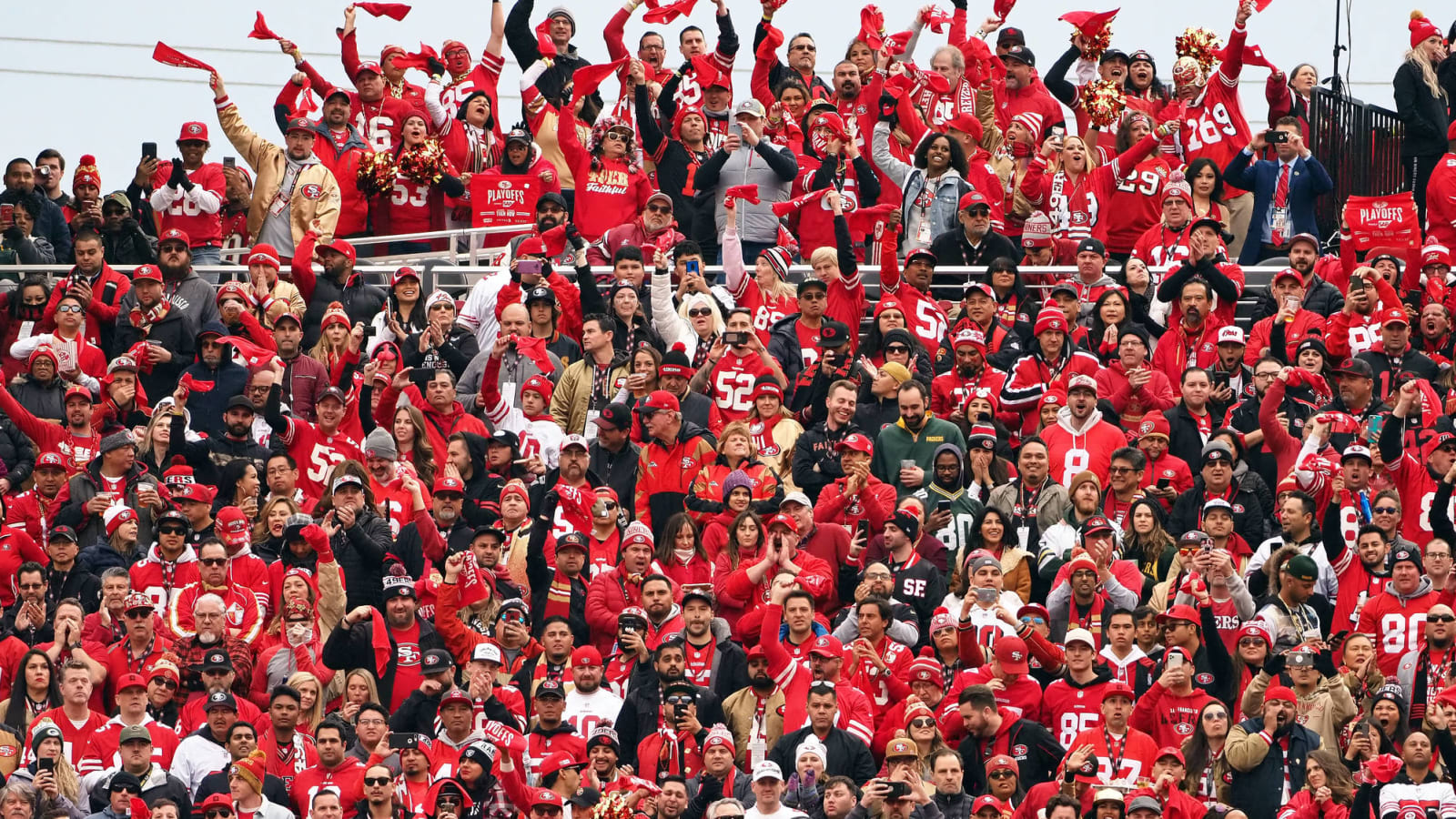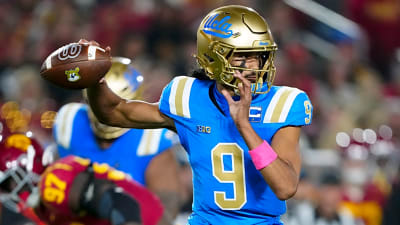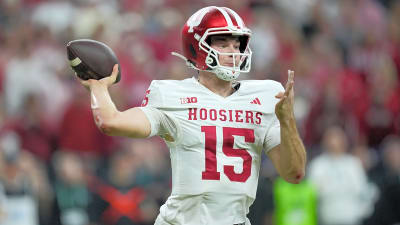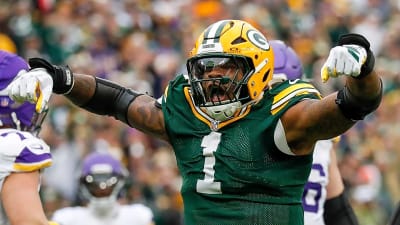
COVID-19-altered NFL fumbling attendance policy
As the NFL moves closer to the scheduled opening of training camps, it is becoming clear the league will need to walk a tightrope to proceed with Week 1 amid the COVID-19 pandemic.
Hellbent on playing its 101st season on schedule, the NFL must navigate obstacles on multiple fronts to pull it off. Beyond the question of how to play a contact sport in the country with the most recorded coronavirus cases, another hurdle has long-term ramifications.
Addressing the attendance issue Thursday, the league said it plans to steer clear of a uniform policy. The NFL has communicated to teams it will be up to states, counties and teams to determine how many fans will be allowed to attend games.
Weeks after the NBA organized a bubble setup, the NFL has yet to publicly concede the pandemic will keep any fans from stadiums. With the coronavirus spreading at record rates three-plus months after it shut down American sports, that seems odd. But a season in which some teams could obtain semblances of home-field advantage while others play 16 games with neutral-site or away-from-home atmospheres runs counter to the NFL’s parity-fueled ethos.
It also seems strange the NFL would hand teams extensive COVID guidelines only to take a backseat on the fan front. Major League Baseball has approached its season like this. It is not the best time to emulate MLB, and fans have lesser impact in baseball. But the financial component has intervened.
The NFL and NFLPA must soon reach a solution regarding the 2021 salary cap in the projected reality of a fanless or sparse-attendance season. Contributing billions to the revenue pool, attendance plays a major role in determining the cap number. It appears the NFL is ready to consider an unbalanced 2020 season and a potentially chaotic spectator policy in exchange for a softer financial blow come March.
NFLPA executive director DeMaurice Smith estimated a fanless season would cost the league more than $3 billion. With the new CBA divvying 48% of all league revenue to players, the pandemic threatens to slash the 2021 salary cap by more than $50 million per team. The most the cap has ever decreased per team in its 27-year existence was $3 million, when it dropped from $123M in 2009 to $120M in 2011 after the 2010 uncapped year. A nosedive in the $50M neighborhood would be a financial catastrophe, which is why the NFL will go to great lengths to prevent it.
The most rumored method of avoiding this roster-building earthquake thus far: the league borrowing from projected future earnings to either create a slight dip for the 2021 salary cap or borrow enough that the cap does not drop. The downside to this would be a grimmer future replacing what recently looked like a booming landscape. That uncertainty has contributed to a quiet stretch on the contract-extension front.
The CBA the players narrowly ratified in March includes two additional playoff games starting this season and a 17-game regular season beginning as soon as 2021. That led to projections the league’s next round of TV deals would produce windfalls and generate greater cap spikes –- potentially raising the NFL salary ceiling from $188M in 2020 to beyond $260M by 2023 –- than the roughly $10M-per-year bumps the 2011 CBA induced. In this reality, positional markets were set to skyrocket and this era’s stars and middle-class players would reap substantial rewards.
That would have made the regular-season schedule expansion – without a second bye week that made too much sense to include – easier to stomach for the players who voiced disappointment about the CBA’s terms. Contract-seeking players look to be on a different timeline now. If the salary cap instead plateaus, this CBA looks much worse for the players. And they are locked into the agreement through 2030. The coronavirus forcing the NFL to cut into its projected early-2020s gains would affect most of its workforce.
Non-superstars, or players at lower-value positions, who have not yet signed second contracts could see their futures change. Supporting-cast veterans on deals without post-2020 guarantees will become cap-casualty candidates. If cap growth slows beyond 2021 because of the virus-based decisions, the middle-class player's lot will change. That raises the stakes for the ongoing NFL-NFLPA negotiations.
But in the short term, revenue will be severely impacted regardless of how the NFL handles the attendance issue. It does not seem the undetermined figures that could be gained from a disorganized, partial-attendance season are worth the potential consequences.
The NFL has the most parity among the top three American sports leagues. A season featuring varying attendance policies would cut into the NFL’s competitive balance.
Contenders could see this approach impact their Super Bowl pursuits; their home-state environments are not created equal. NFC frontrunners San Francisco and Seattle play in states that displayed more caution during the pandemic's initial months, while Tampa Bay and Dallas are in locales that reopened sooner. This imbalance would play out across the league. It would be foolish to let this impact playoff seeding, and depending on where the country stands with the virus in January, having certain postseason home-field advantages matter while others do not would taint the season.
The NFL avoiding this macro matter, as the record numbers of positive coronavirus cases emerge, is a bad look. It is too early to determine if fans should be allowed in stadiums, but the nation’s most popular sports league stepping out of the way creates poor optics.
Having 32 teams play in empty stadiums –- both preserving a level playing field and better protecting fans amid the virus-created uncertainty –- would be a better look for the NFL than the disorganized setup that would stand to loom.
While this is one of several critical questions the league and the NFLPA must answer in the coming weeks, it should not be brushed aside so soon.
More must-reads:
- As clock ticks to NFL training camps, key COVID-19 issues remain unresolved
- COVID-19 fallout among factors working against Vikings' Dalvin Cook, talented RB group in negotiations
- The 'Most 3-passing, 1-rushing TD games' quiz
Customize Your Newsletter
 +
+
Get the latest news and rumors, customized to your favorite sports and teams. Emailed daily. Always free!








